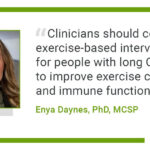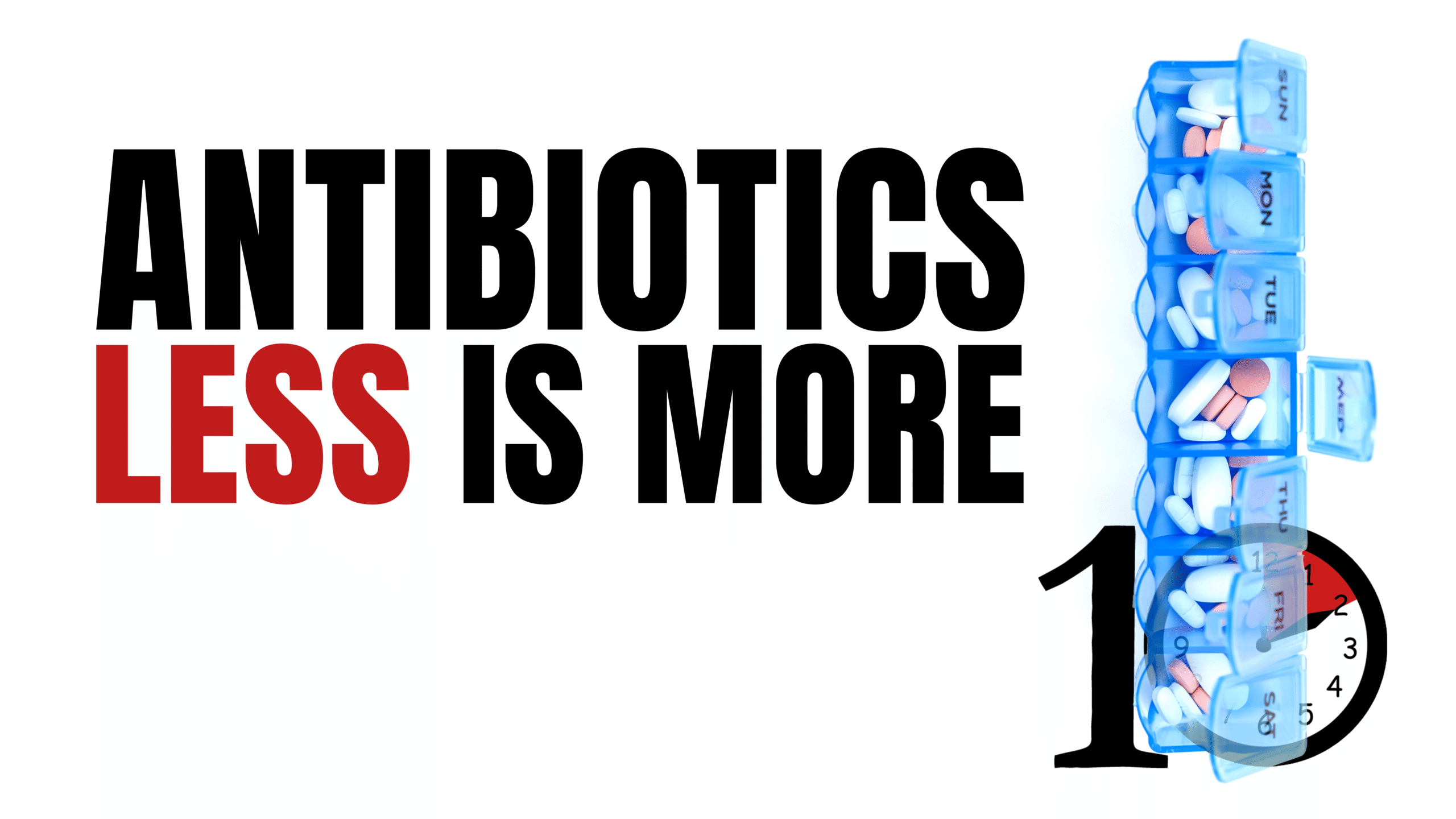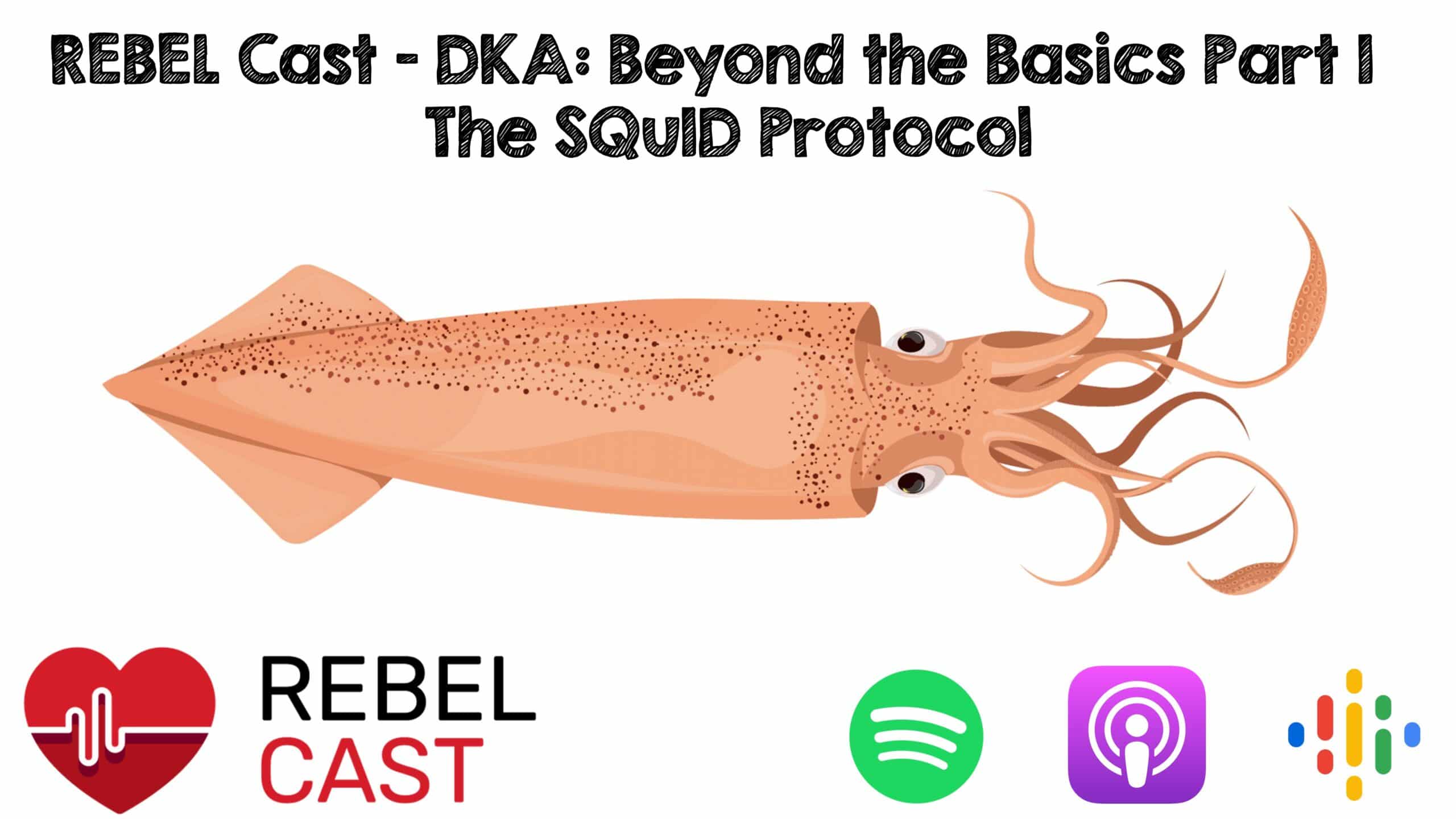Why do so many antibiotics get prescribed for a week? Is there something special about 7 days of therapy? Would we ever use the number 7 in any other context? The courses of antibiotics we prescribe are clearly not scientific, which has always made the lecture that patients receive about finishing their entire course of antibiotics sounds pretty stupid. Thankfully, a lot of attention has been paid to shortening antibiotic courses over the last few years. This post will briefly summarize some of that literature, and discuss how best to translate it into day to day practice.
As short as possible, but no shorter?
General Theory: Longer courses are worse
There was a very prevalent myth when I was younger that if you didn’t complete your course of antibiotics, you would cause antibiotic resistant bacteria. The theory, I guess, was that you needed to kill every single bacteria, because any left alive would live to tell the tale, and would know in the future how to evade this antibiotic. That is obviously rubbish. No antibiotic we prescribe wipes out the entire microbiome. Longer courses just mean more selective pressure in more bacterial populations for antibiotic resistance. Longer courses of antibiotics also mean more adverse events, simply because patients have more time to develop rashes or diarrhea or more severe reactions.
Mo Y, Oonsivilai M, Lim C, Niehus R, Cooper BS. Implications of reducing antibiotic treatment duration for antimicrobial resistance in hospital settings: A modelling study and meta-analysis. PLoS Med. 2023 Jun 15;20(6):e1004013. doi: 10.1371/journal.pmed.1004013. PMID: 37319169
- This is a meta-analysis from the IDSA that found that, although very few RCTs actually monitored this outcome, among hospitalized patients, every extra day of antibiotics led to a 7% absolute increase in carriage rates of antibiotic resistant gram negative strains.
Curran J, Lo J, Leung V, Brown K, Schwartz KL, Daneman N, Garber G, Wu JHC, Langford BJ. Estimating daily antibiotic harms: an umbrella review with individual study meta-analysis. Clin Microbiol Infect. 2022 Apr;28(4):479-490. doi: 10.1016/j.cmi.2021.10.022. Epub 2021 Nov 12. PMID: 34775072
- A systematic review of systematic reviews. Each extra day of antibiotic therapy was associated with a 4% increased odds of adverse events (OR 1.04, 95% CI 1.02–1.07). Odds of severe adverse events went up by 9% per day. Antibiotic resistance also appeared to be increased, but was not statistically significant in this analysis.

Unfortunately, medical institutions are still pushing this myth to this day. I have seen social media advertisements from the World Health Organization, among many many other respected institutions, stating that you must always finish your antibiotic course, even if you feel better. This is just wrong. This is harmful. I don’t know who is behind these campaigns, but they need to stop.
(I assume this is because people at the WHO work with a very different set of infectious diseases. It is true that you need to keep taking your tuberculosis medication even when you are feeling better, and that stopping will lead to resistance, but tuberculosis is nothing like the infectious diseases we are treating routinely in North America.)
Urinary tract infections
UTIs are a good place to start for shortening antibiotic courses, seeing as most UTIs are self-resolving. (70% of patients improve with placebo alone. Antibiotics improve that number, but the vast majority of these patients get better in spite of, not because of their medical care.) I don’t think this concept will be new to anyone. We were hearing about short courses of antibiotics for simple UTIs way back when I was a resident.
Cystitis
Kim DK, Kim JH, Lee JY, Ku NS, Lee HS, Park JY, Kim JW, Kim KJ, Cho KS. Reappraisal of the treatment duration of antibiotic regimens for acute uncomplicated cystitis in adult women: a systematic review and network meta-analysis of 61 randomised clinical trials. Lancet Infect Dis. 2020 Sep;20(9):1080-1088. doi: 10.1016/S1473-3099(20)30121-3. Epub 2020 May 21. PMID: 32446327
- Meta-analysis of 61 RCTs including 20,780 adult women. Using fluoroquinolones (which we probably shouldn’t do first line), a single dose was as effective as 3 days of therapy (RR 0·994 95% CI 0·94-1·05). There is also evidence of equivalence of a single dose of amoxicillin/clavulanate or third generation cephalosporins, as compared to 3 day regimens, but with only low quality evidence. For pivmecillinam (an antibiotic I have never heard of, but I guess is another beta-lacatam) a 3 day course was as good as 5 or 7 days.
Milo G, Katchman EA, Paul M, Christiaens T, Baerheim A, Leibovici L. Duration of antibacterial treatment for uncomplicated urinary tract infection in women. Cochrane Database Syst Rev. 2005 Apr 18;(2):CD004682. doi: 10.1002/14651858.CD004682.pub2. PMID: 15846726
- An older Cochrane review that includes 32 RCTs with 9605 adult women, concludes “3 days of antibiotic therapy is similar to 5-10 days in achieving symptomatic cure during uncomplicated UTI treatment, while the longer treatment is more effective in obtaining bacteriological cure.” Adverse events were less common in the shorter treatment group (RR 0.83).
Pyelonephritis/ febrile UTIs
Zahavi I, Kunwar D, Olchowski J, Dallasheh H, Paul M. Short vs. long antibiotic treatment for pyelonephritis and complicated urinary tract infections: a living systematic review and meta-analysis of randomized controlled trials. Clin Microbiol Infect. 2025 Aug;31(8):1263-1271. doi: 10.1016/j.cmi.2025.04.008. Epub 2025 Apr 12. PMID: 40228579
- A meta-analysis of adult patients with pyelonephritis or complicated UTIs. They found 16 RCTs encompassing 4643 patients, and found that 5–7 days of antibiotics are as effective as 10–14 days for clinical success, microbiological cure, relapse, reinfection.
Eliakim-Raz N, Yahav D, Paul M, Leibovici L. Duration of antibiotic treatment for acute pyelonephritis and septic urinary tract infection– 7 days or less versus longer treatment: systematic review and meta-analysis of randomized controlled trials. J Antimicrob Chemother. 2013 Oct;68(10):2183-91. doi: 10.1093/jac/dkt177. Epub 2013 May 21. PMID: 23696620
- Systematic review of 8 RCTs comparing short course (7 days or less) to longer course antibiotics in pyelonephritis. There was no difference in clinical failure between short and long courses. The confidence intervals are large, but I am reassured that the point estimate suggests better outcomes with shorter courses (RR 0.63, 95% CI 0.33–1.18).
Mueller GD, Conway SJ, Gibeau A, Shaikh N. Short- versus standard-course antimicrobial therapy for children with urinary tract infection: A meta-analysis. Acta Paediatr. 2025 Mar;114(3):479-486. doi: 10.1111/apa.17546. Epub 2024 Dec 17. PMID: 39690862
- The pediatric data is a little mixed. A lot seems to depend on how you define your outcomes. This systematic review found 9 RCTs of children with febrile UTIs, and found no (or only marginal) difference between short course (2-5 days) and long course (6-14 days) antibiotics in terms of clinical cure (risk difference 2.2% 95% CI0.0-4.3). However, there was a difference in terms of patients with ongoing positive cultures (risk difference 8.7%). There are a number of studies that show basically this. There are small benefits of treatment courses of 7 days, but unfortunately most of these studies fail to appropriately describe harms, so it is hard to know if the small added benefit is worth it.
Zaoutis T, Shaikh N, Fisher BT, Coffin SE, Bhatnagar S, Downes KJ, Gerber JS, Shope TR, Martin JM, Muniz GB, Green M, Nagg JP, Myers SR, Mistry RD, O’Connor S, Faig W, Black S, Rowley E, Liston K, Hoberman A. Short-Course Therapy for Urinary Tract Infections in Children: The SCOUT Randomized Clinical Trial. JAMA Pediatr. 2023 Aug 1;177(8):782-789. doi: 10.1001/jamapediatrics.2023.1979. Erratum in: JAMA Pediatr. 2024 Jun 1;178(6):630. doi: 10.1001/jamapediatrics.2024.0973. PMID: 37358858
- A multicenter, randomized, double-blind, placebo-controlled, non inferiority trial comparing 5 to 10 days of antibiotics in pediatric patients with UTI. 94% were febrile at diagnosis. Treatment failure was lower in the standard course group when they looked between day 6 and 11 (0.6% vs 4.2%), and that was their primary outcome, and so the trial is “not noninferior”. However, the numbers are weird, and suggest a design flaw with their trial, because treatment failure after 11-14 days was identical at 4%. How can treatment failure go up over time? Well, the definition of UTI or treatment failure included a positive urine culture, but the 10 day group was still on antibiotics when their urine culture was done, which seems to have sterilized the urine, but perhaps without any measurable clinical benefit? Looking through the trial, I would be fine with my kid receiving either therapy based on the clinical numbers I can see.
Montini G, Tessitore A, Console K, Ronfani L, Barbi E, Pennesi M; STOP Trial Group. Short Oral Antibiotic Therapy for Pediatric Febrile Urinary Tract Infections: A Randomized Trial. Pediatrics. 2024 Jan 1;153(1):e2023062598. doi: 10.1542/peds.2023-062598. PMID: 38146260
- This is another RCT of pediatric febrile UTIs, although this time not blinded. Children 3 months to 5 years of age were randomized to amoxicillin-clavulanate for either 5 or 10 days. The recurrence rate at 30 days was 2.8% with short course and 14.3% with standard course, allowing for a conclusion that short course antibiotics were non-inferior.
Guidelines
Gupta K, Hooton TM, Naber KG, Wullt B, Colgan R, Miller LG, Moran GJ, Nicolle LE, Raz R, Schaeffer AJ, Soper DE; Infectious Diseases Society of America; European Society for Microbiology and Infectious Diseases. International clinical practice guidelines for the treatment of acute uncomplicated cystitis and pyelonephritis in women: A 2010 update by the Infectious Diseases Society of America and the European Society for Microbiology and Infectious Diseases. Clin Infect Dis. 2011 Mar 1;52(5):e103-20. doi: 10.1093/cid/ciq257. PMID: 21292654
- Hard to summarize in one sentence, because so many different antibiotic classes are used, but short courses always recommended for cystitis
- Nitrofurantoin: 5 days
- Trimethoprim-sulfamethoxazole: 3 days
- Fluoroquinolones generally shouldn’t be used, but if so: 3 days
- Fosfomycin: 1 dose
Grant J, Saux NL; members of the Antimicrobial Stewardship and Resistance Committee (ASRC) of the Association of Medical Microbiology and Infectious Disease (AMMI) Canada. Duration of antibiotic therapy for common infections. J Assoc Med Microbiol Infect Dis Can. 2021 Sep 30;6(3):181-197. doi: 10.3138/jammi-2021-04-29. PMID: 36337760
- Association of Medical Microbiology and Infectious Disease (AMMI) Canada says “short courses of therapy (3–5 d, depending on antibiotic class) for uncomplicated cystitis in otherwise healthy young women is well-supported by robust data.” For pyelonephritis, “a 7-day course of a fluoroquinolone (ciprofloxacin or levofloxacin) is likely adequate for the treatment of uncomplicated pyelonephritis in men and non-pregnant women; if β-lactam agents (ie, cephalosporins, aminopenicillins, or trimethoprim-sulfamethoxazole) are given based on susceptibilities, longer courses of 10 to 14 days should be considered”.
Pneumonia
The earliest studies I came across for shorter courses of antibiotics were for pediatric pneumonia, and I admit that I was not initially convinced. I was worried that too many patients were likely to have viral rather than bacterial pneumonia, and therefore choices around antibiotics would be irrelevant. However, the more I read the more convinced I have become, and although I have been using 5 days recently, I could see myself transitioning to only 3 days of treatment without much more evidence. ;
Tansarli GS, Mylonakis E. Systematic Review and Meta-analysis of the Efficacy of Short-Course Antibiotic Treatments for Community-Acquired Pneumonia in Adults. Antimicrob Agents Chemother. 2018 Aug 27;62(9):e00635-18. doi: 10.1128/AAC.00635-18. PMID: 29987137
- A systematic review comparing less than 7 days of antibiotics to 7 or more days in adult pneumonia found identical rates of clinical cure, no change in relapse, but a significant decrease in adverse events with shorter courses. Mortality was also significantly lower with shorter courses (RR = 0.52 95% CI, 0.33 to 0.82).
Kuitunen I, Jääskeläinen J, Korppi M, Renko M. Antibiotic Treatment Duration for Community-Acquired Pneumonia in Outpatient Children in High-Income Countries-A Systematic Review and Meta-Analysis. Clin Infect Dis. 2023 Feb 8;76(3):e1123-e1128. doi: 10.1093/cid/ciac374. PMID: 35579504
- This is a systematic review of RCTs looking at short (3-5 day) versus standard (7-10 day) courses of antibiotics for pediatric pneumonia. There were 4 trials with a total of 1541 children. The outcomes were identical. Need for antibiotic retreatment and treatment failure were 8% in both groups. No child needed hospitalization in either group of any trial.
Gao Y, Liu M, Yang K, Zhao Y, Tian J, Pernica JM, Guyatt G. Shorter Versus Longer-term Antibiotic Treatments for Community-Acquired Pneumonia in Children: A Meta-analysis. Pediatrics. 2023 Jun 1;151(6):e2022060097. doi: 10.1542/peds.2022-060097. PMID: 37226686
- This is another systematic review of pediatric pneumonia RCTs, but despite being done in the same year as the prior paper, they found 16 trials with 12774 patients. Basically all of the outcomes – clinical cure, treatment failure, relapse, hospitalization, mortality – were identical.
Pakistan Multicentre Amoxycillin Short Course Therapy (MASCOT) pneumonia study group. Clinical efficacy of 3 days versus 5 days of oral amoxicillin for treatment of childhood pneumonia: a multicentre double-blind trial. Lancet. 2002 Sep 14;360(9336):835-41. doi: 10.1016/S0140-6736(02)09994-4. Erratum in: Lancet. 2003 Mar 1;361(9359):788. PMID: 12243918
- RCT of 2000 pediatric patients 2-59 months of age with pneumonia, randomized to 3 or 5 days of amoxicillin. Treatment failure was the same (but seems absurdly high to me at 21%).
Pernica JM, Harman S, Kam AJ, Carciumaru R, Vanniyasingam T, Crawford T, Dalgleish D, Khan S, Slinger RS, Fulford M, Main C, Smieja M, Thabane L, Loeb M. Short-Course Antimicrobial Therapy for Pediatric Community-Acquired Pneumonia: The SAFER Randomized Clinical Trial. JAMA Pediatr. 2021 May 1;175(5):475-482. doi: 10.1001/jamapediatrics.2020.6735. PMID: 33683325
- This is a non-inferiority RCT comparing 5 to 10 days of amoxicillin in pediatric patients aged 6 months to 10 years with community acquired pneumonia. Like many of the pediatric trials on this topic, I expect a lot of these kids had viral rather than bacterial pneumonia. The outcomes look pretty similar when looking at raw numbers (depending on your definition of clinical cure, the groups were within 1-2% of each other), but these results did not meet their rather loose definition of non-inferiority.
Guidelines
Metlay JP, Waterer GW, Long AC, Anzueto A, Brozek J, Crothers K, Cooley LA, Dean NC, Fine MJ, Flanders SA, Griffin MR, Metersky ML, Musher DM, Restrepo MI, Whitney CG. Diagnosis and Treatment of Adults with Community-acquired Pneumonia. An Official Clinical Practice Guideline of the American Thoracic Society and Infectious Diseases Society of America. Am J Respir Crit Care Med. 2019 Oct 1;200(7):e45-e67. doi: 10.1164/rccm.201908-1581ST. PMID: 31573350
- The IDSA/ATS guideline recommends at least 5 days of therapy, but I think the most important thing they say is “the duration of antibiotic therapy should be guided by a validated measure of clinical stability (resolution of vital sign abnormalities [heart rate, respiratory rate, blood pressure, oxygen saturation, and temperature], ability to eat, and normal mentation)”. I don’t know about the need for a validated measure, but responding to a patient’s symptoms makes sense. They are emphasizing that sometimes we need to extend antibiotic courses, but the opposite is also true. Patients should take antibiotics until they feel better.
Grant J, Saux NL; members of the Antimicrobial Stewardship and Resistance Committee (ASRC) of the Association of Medical Microbiology and Infectious Disease (AMMI) Canada. Duration of antibiotic therapy for common infections. J Assoc Med Microbiol Infect Dis Can. 2021 Sep 30;6(3):181-197. doi: 10.3138/jammi-2021-04-29. PMID: 36337760
- Association of Medical Microbiology and Infectious Disease (AMMI) Canada says “duration of therapy for acute uncomplicated community-acquired pneumonia in adults should be a minimum of 5 days, provided there is clinical stability for 48 to 72 hours… Since viral infections are more common in children, clinicians should use clinical and radiological criteria to distinguish bacterial pneumonia from bronchiolitis in younger children and infants. Duration of therapy should be 5–7 days for uncomplicated pneumonia in children who have clinically improved and have normal vital signs.”
Cellulitis
Clinical decision making is hard in cellulitis. So is research. This is partly due to the fact that a lot of hot red skin is not actually cellulitis (our misdiagnosis rate is high). It is also because the redness and heat doesn’t necessarily correlate with the underlying infection. If you look at cellulitis studies, even when antibiotics are clearly working, redness essentially always gets worse until between days 2 and 3. (If you are still drawing lines on patients’ skin, you should stop, because the redness will always worsen, and these lines just result in bad clinical decisions.) Unless there are systematic symptoms, you mostly just need to wait and trust the antibiotics, although there is a huge role for adjuncts, such as compression stocking and elevation, which are probably way under-used, and will help the symptoms resolve faster than antibiotics alone.
Brindle R, Williams OM, Barton E, Featherstone P. Assessment of Antibiotic Treatment of Cellulitis and Erysipelas: A Systematic Review and Meta-analysis. JAMA Dermatol. 2019 Sep 1;155(9):1033-1040. doi: 10.1001/jamadermatol.2019.0884. PMID: 31188407
- This meta-analysis included 43 RCTs with 5999 children and adult patients with cellulitis and erysipelas. Only 5 of the studies looked at duration, and most didn’t compare the same antibiotic, so this is very low quality data. Overall, there was no difference was found between short and long antibiotic courses (RR = 0.99; 95% CI, 0.94-1.04). Also, just because it lets me jump up on my soap box, I will also point out that they found “low-quality evidence that IV administration was inferior compared with oral administration (RR = 0.83; 95% CI, 0.75-0.93; P < .001)”.
Cross ELA, Jordan H, Godfrey R, Onakpoya IJ, Shears A, Fidler K, Peto TEA, Walker AS, Llewelyn MJ. Route and duration of antibiotic therapy in acute cellulitis: A systematic review and meta-analysis of the effectiveness and harms of antibiotic treatment. J Infect. 2020 Oct;81(4):521-531. doi: 10.1016/j.jinf.2020.07.030. Epub 2020 Jul 31. PMID: 32745638
- Another meta-analysis. Overall, there are only 2 trials that compare the same antibiotic in different doses. In their analysis, they found no evidence of a difference in cure rate based on antibiotic duration (RR 0.99 95% CI 0.96-1.03). They say this RCT data is consistent with the observational data on the topic. I believe this conclusion, however much like the inclusion of viral illnesses in the pediatric pneumonia data, the inclusion of a lot of non cellulitis diagnoses which don’t need any antibiotics (which we know happens a ton clinically) would bias these trials towards showing no difference.
Cranendonk DR, Opmeer BC, van Agtmael MA, Branger J, Brinkman K, Hoepelman AIM, Lauw FN, Oosterheert JJ, Pijlman AH, Sankatsing SUC, Soetekouw R, Veenstra J, de Vries PJ, Prins JM, Wiersinga WJ. Antibiotic treatment for 6 days versus 12 days in patients with severe cellulitis: a multicentre randomized, double-blind, placebo-controlled, non-inferiority trial. Clin Microbiol Infect. 2020 May;26(5):606-612. doi: 10.1016/j.cmi.2019.09.019. Epub 2019 Oct 13. PMID: 31618678
- A double blind placebo controlled RCT of 248 patients hospitalized for severe cellulitis comparing 6 and 12 days of flucloxacillin. The gold standard in cellulitis trials is difficult, because there are lots of conditions that cause red swollen skin, lots of misdiagnosis, and it isn’t clear the degree of erythema correlates well with underlying infection. Cure rates were the same in both groups, but were miserable (only 50% cure rate). However, relapse was significantly higher with shorter courses (65% vs 24%).
Guidelines
Stevens DL, Bisno AL, Chambers HF, Dellinger EP, Goldstein EJ, Gorbach SL, Hirschmann JV, Kaplan SL, Montoya JG, Wade JC; Infectious Diseases Society of America. Practice guidelines for the diagnosis and management of skin and soft tissue infections: 2014 update by the Infectious Diseases Society of America. Clin Infect Dis. 2014 Jul 15;59(2):e10-52. doi: 10.1093/cid/ciu444. Erratum in: Clin Infect Dis. 2015 May 1;60(9):1448. doi: 10.1093/cid/civ114.. Dosage error in article text. PMID: 24973422
- The IDSA says “The recommended duration of antimicrobial therapy is 5 days, but treatment should be extended if the infection has not improved within this time period.”
Grant J, Saux NL; members of the Antimicrobial Stewardship and Resistance Committee (ASRC) of the Association of Medical Microbiology and Infectious Disease (AMMI) Canada. Duration of antibiotic therapy for common infections. J Assoc Med Microbiol Infect Dis Can. 2021 Sep 30;6(3):181-197. doi: 10.3138/jammi-2021-04-29. PMID: 36337760
- Association of Medical Microbiology and Infectious Disease (AMMI) Canada says “duration of therapy for uncomplicated, non-purulent cellulitis for adults and children is 5 to 7 days.”
Pharyngitis
At some point in the not too distant future, I will have a much longer post on antibiotic use for acute pharyngitis. There are some studies that show shorter courses of antibiotics are just as good as longer courses, although never looking at the outcomes we really care about (rheumatic fever). However, these studies are sort of pointless. Acute pharyngitis is a self resolving illness. When 0 days of antibiotics are needed, 5 is obviously going to be as good as 10, because neither is better than 0. As far as I know, there are no studies looking at antibiotic course length that actually look at the important clinical outcomes. However, sometime soon I will publish a much deeper look at antibiotic use in pharyngitis, so make sure you are subscribed if you are interested.
Otitis media
You can copy and paste the pharyngitis paragraph here. Antibiotics are not needed for otitis media. They are almost certainly net harmful. If 7 days is no better than 0 days, the comparison to 3 or 5 days is sort of pointless. This point is debated in some circles, because different (mostly non-patient oriented) outcomes have been used, and sometimes purport to show benefit from antibiotics. I personally do not use antibiotics in otitis media, and think that is very well supported by the data. That being said, the data on short course antibiotics is a lot more mixed, again complicated by the various endpoints people choose in this condition.
Kozyrskyj A, Klassen TP, Moffatt M, Harvey K. Short-course antibiotics for acute otitis media. Cochrane Database Syst Rev. 2010 Sep 8;2010(9):CD001095. doi: 10.1002/14651858.CD001095.pub2. PMID: 20824827
- Cochrane review. 49 RCTs encompassing 12,045 children 1 month to 18 years. Treatment failure at one month was higher with antibiotic courses less than 7 days (unless for some bizarre reason you are using ceftriaxone), meaning lack of clinical resolution, relapse, or recurrence. Although this is a reasonable outcome (unlike trials that just look if there is an effusion), it will be potentially biased if some children are checked while still taking antibiotics, because antibiotics often have antiinflammatory as well as antibacterial effects, meaning ears will look less red even if there is no important difference. You can tell the outcome is clinically flawed because the treatment failure rate was an insanely high 21%. I see far fewer treatment failures with my approach of no antibiotics. The overall benefit of antibiotics longer than 7 days was 3% absolute (21% vs 18%). The flip side was that longer courses of antibiotics caused significantly more GI adverse events (which were the only type of adverse events mentioned, and resistance wasn’t commented on). Even if you take the numbers at face value, it isn’t clear if this is a net win for longer courses of antibiotics.
Sinusitis
This is getting repetitive, but when a condition doesn’t require any antibiotics at all, shorter courses are clearly better than longer, but significantly more harmful than just not using antibiotics.
Falagas ME, Karageorgopoulos DE, Grammatikos AP, Matthaiou DK. Effectiveness and safety of short vs. long duration of antibiotic therapy for acute bacterial sinusitis: a meta-analysis of randomized trials. Br J Clin Pharmacol. 2009 Feb;67(2):161-71. doi: 10.1111/j.1365-2125.2008.03306.x. Epub 2008 Sep 19. PMID: 19154447
- Systematic review showing courses less than 7 days were as effective as longer courses of antibiotics in sinusitis, but with fewer adverse events. Lacks the needed comparison to 0 antibiotics.
Lumping infections together
A few systematic reviews you will see lump all bacterial infections together. I am not sure adding clinical heterogeneity is a good idea, but I saw them referenced more than once, so I figured I would add them here.
Royer S, DeMerle KM, Dickson RP, Prescott HC. Shorter Versus Longer Courses of Antibiotics for Infection in Hospitalized Patients: A Systematic Review and Meta-Analysis. J Hosp Med. 2018 May 1;13(5):336-342. doi: 10.12788/jhm.2905. Epub 2018 Jan 25. PMID: 29370318
- A systematic review looking at short versus long courses of antibiotics for infection in hospitalized patients over the age of 12. There were no differences in clinical efficacy, microbiological cure, or mortality. Infections included were pneumonia, UTI, and intra-abdominal infections.
My practice
My sense is that the concept of the set timeframe for antibiotics is nonsensical. Patients should take antibiotics until they are better, and then stop. The exact timeframe will vary from patient to patient.
Practically, this might mean sometimes writing longer prescriptions than are recommended above, but just telling patients to stop on their own. Other times, this might mean writing shorter prescriptions, but arranging follow-up to ensure clinical improvement.
I have used this treat until improved strategy for most conditions for quite some time, but it does require some nuance and judgement. First, both patients and physicians need to recognize the difference between symptoms indicating active infection and symptoms caused by inflammation, whether or not active infection persists. A common example is post infectious cough. You will do a lot of harm if you extend antibiotics because a patient is still coughing. The signs of active infection in respiratory infection are fever, significant fatigue, myalgias, etc. I expect pneumonia to cause symptoms for 2-3 weeks, even though the active infection (and therefore antibiotic course) is only 3-5 days.
This is more difficult in cellulitis. The signs of infection in cellulitis are identical to the signs of inflammation. The natural course of cellulitis is for erythema to increase, even when patients are improving. (Physiologically, this probably represents an increased immune response to chemicals released as bacteria die from our antibiotics). One of the biggest mistakes in cellulitis management is to increase antibiotic care before day 3 because of increasing erythema.
Luckily, antibiotics are not the ultimate cure for most infections. The antibiotics are a necessary aid, but the immune system does the bulk of the work. That is why I am perfectly fine with most of my patients stopping their antibiotics within 24 hours of improvement; their immune system will clean up any remaining infection. But it also highlights the importance of clinical judgement. There is no data to guide me, but in patients with immunosuppression, I would prefer their antibiotics to continue for 3 or perhaps even 5 days after clinical improvement, depending on the scenario.
So, I don’t think there is necessarily a one size fits all answer to antibiotic therapy. However, you need some sense of what you are going to write on the prescription, so here are my current starting points for common infections:
Pneumonia: 5 days (and maybe 3 days in kids)
Cellulitis: 5 days (Some patients definitely need longer, but usually the more important treatment is taking care of the underlying problem, such as managing edema with elevation and compression stocking.)
Simple UTI (cystitis): 3 days for most infections,
Febrile UTI/pyelonephritis: 7 days
Sinusitis/pharyngitis/otitis media: 0 days
Other FOAMed
REBELEM: Pediatric UTIs: Short-Course vs. Standard-Course Antibiotics — Is It Time for a Change?
REBELEM: The SAFER Trial: Pediatric CAP – Amoxicillin 5 days vs 10 days
REBELEM: Short Course Antibiotics for Peds CAP: A Systematic Review and Meta-Analysis
SGEM#338: Are Children with CAP Safe and Sound if Treated for 5d Rather than 10d of Antibiotics?
How long should we treat children with pneumonia for? – the results of CAP-IT
Magical thinking in modern medicine: IV antibiotics for cellulitis










